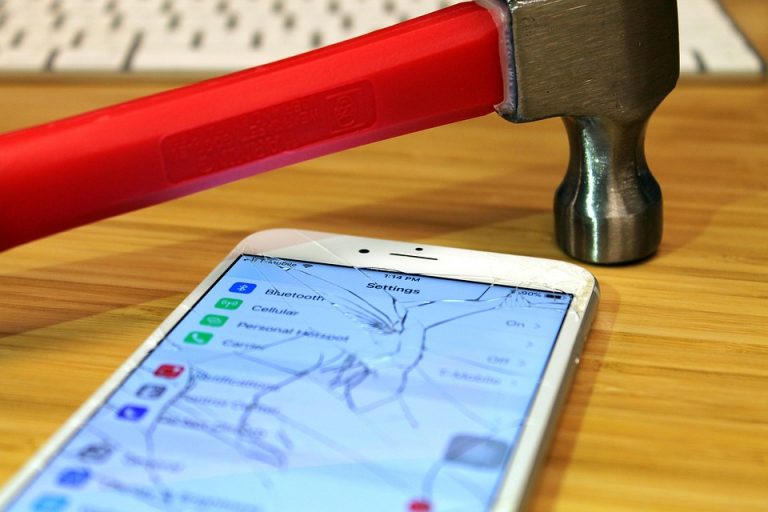Did you know that in a recent survey, 81% of Americans expressed concern about how their data is being used online? With data breaches and privacy scandals making headlines almost daily, it’s no wonder people are worried. If you’re an iPhone 14 user, you might be wondering how to fortify your device against potential threats. Well, you’re in luck! Here’s a no-nonsense guide to bolstering your privacy settings and keeping your data safe.
Contents
1. Enable Face ID or Passcode
Let’s start with the basics. If you haven’t already set up Face ID or a passcode, you’re leaving your device vulnerable. These features act as your first line of defense.
Why It Matters
Using Face ID or a strong passcode ensures that only you can access your device. This is especially crucial if you often leave your phone unattended or share it with family members.
How to Set It Up
- Face ID: Go to Settings > Face ID & Passcode. Follow the prompts to set it up.
- Passcode: If you prefer a passcode, choose a six-digit code or even a custom alphanumeric code for added security.
Pro Tip
Avoid using easily guessable passcodes like “123456” or your birthday. Make it complex!
2. Limit Location Services
Location services can be a double-edged sword. While they enhance app functionality, they can also compromise your privacy.
Why It Matters
Apps can track your location, sometimes even when they aren’t in use. This data can be sold to advertisers or used for other purposes you might not agree with.
How to Adjust Settings
- Go to Settings > Privacy & Security > Location Services.
- You can choose Never, Ask Next Time, or While Using the App for each app.
Consider This
Only allow location access for trusted apps. For instance, your navigation app needs your location, but does your weather app?
3. Review App Permissions
It’s easy to click “Allow” when an app requests access to your camera, microphone, or contacts. But do you really know what you’re giving away?
Why It Matters
Apps can collect data beyond what they need to function. This can lead to unwanted data sharing, sometimes without your knowledge.
How to Review Permissions
- Head to Settings > Privacy & Security > Camera, Microphone, and Contacts.
- Review which apps have access and revoke permissions for those you don’t trust or use frequently.
Pro Tip
Regularly audit your app permissions. A quick check can save you from potential privacy breaches.
4. Use Safari’s Privacy Features
Apple’s Safari browser comes with built-in privacy features that help protect your data while you surf the web.
Why It Matters
Tracking is rampant online. Advertisers often follow you around the web, collecting data on your browsing habits.
How to Enable Privacy Features
- Open Settings > Safari.
- Enable Prevent Cross-Site Tracking and Block All Cookies.
A Word of Caution
While these features enhance privacy, they may affect how some websites function. You might need to adjust settings for specific sites.
5. Turn Off Ad Tracking
Apple allows you to limit ad tracking, which can decrease the amount of personalized ads you see.
Why It Matters
Reducing ad tracking not only enhances your privacy but can also lead to a less cluttered online experience.
How to Adjust Settings
- Go to Settings > Privacy & Security > Apple Advertising.
- Toggle off Personalized Ads.
Keep in Mind
This won’t stop ads entirely; it just means they won’t be tailored based on your data.
6. Enable ‘Find My iPhone’
In case your iPhone is lost or stolen, enabling the ‘Find My iPhone’ feature can be a lifesaver.
Why It Matters
This feature allows you to locate your device, remotely lock it, or even erase it if necessary.
How to Set It Up
- Navigate to Settings > [your name] > Find My.
- Toggle on Find My iPhone, and enable Send Last Location.
Important Note
Ensure that your device is signed in to your Apple ID for this feature to work effectively.
7. Regularly Update iOS
Keeping your iPhone’s operating system updated is crucial for maintaining privacy and security.
Why It Matters
Updates often include security patches that fix vulnerabilities. Neglecting updates can leave your device exposed to threats.
How to Update
- Go to Settings > General > Software Update.
- Enable Automatic Updates for peace of mind.
Final Thoughts
Don’t ignore those software update notifications! They’re your ticket to a safer device.
FAQs
1. How do I reset my privacy settings on my iPhone 14?
You can reset all settings by going to Settings > General > Transfer or Reset iPhone > Reset > Reset All Settings. This won’t delete your data but will reset system settings.
2. Can I see what data Apple collects about me?
Yes! You can view your data by going to Settings > Privacy & Security > Analytics & Improvements. Here, you can see what data is collected and manage your preferences.
3. Do I need a VPN for my iPhone?
While a VPN can enhance your privacy, it’s not always necessary. It can be beneficial when using public Wi-Fi, but for everyday use, strong privacy settings may suffice.
4. What should I do if my iPhone is lost?
Use the Find My iPhone feature to locate your device. If you can’t find it, remotely lock or erase it through the Find My app on another device or via iCloud.
Conclusion
Strengthening your iPhone 14’s privacy settings doesn’t have to be overwhelming. By following these seven actionable steps, you’ll significantly reduce the risk of unauthorized data access. Remember, privacy is a journey, not a destination. Regularly review your settings and stay informed about new features or updates that Apple rolls out.
With a proactive approach, you can enjoy your iPhone while keeping your personal information under wraps. So, what are you waiting for? Go ahead and tighten those privacy screws!








